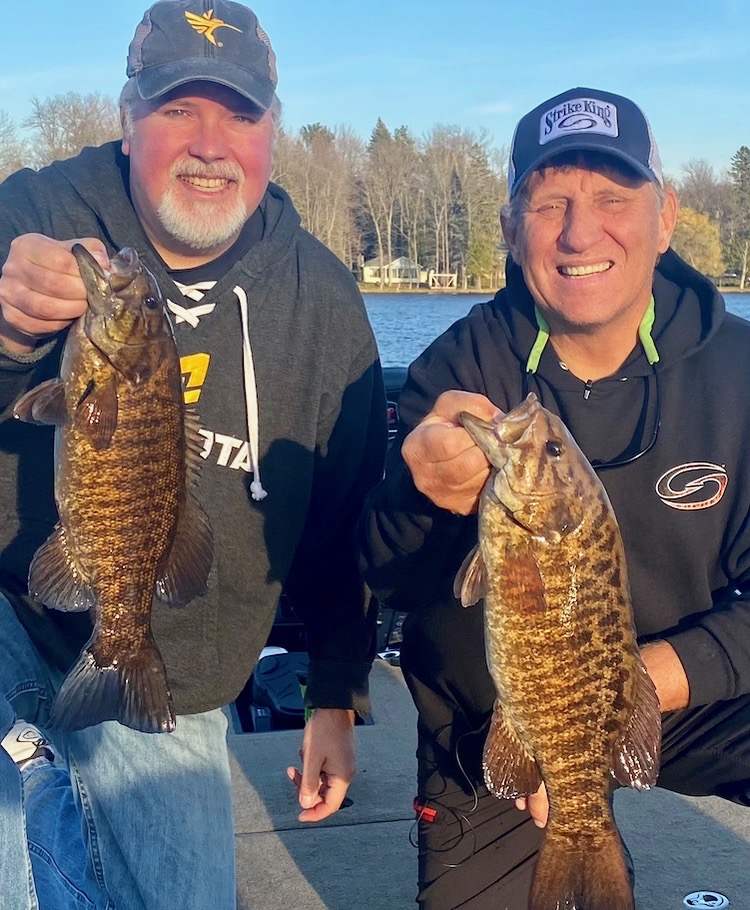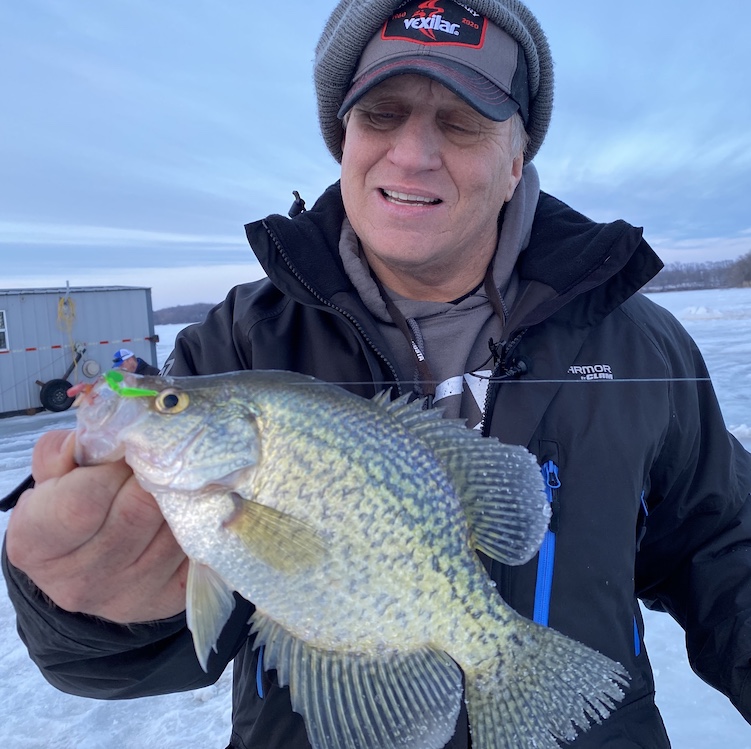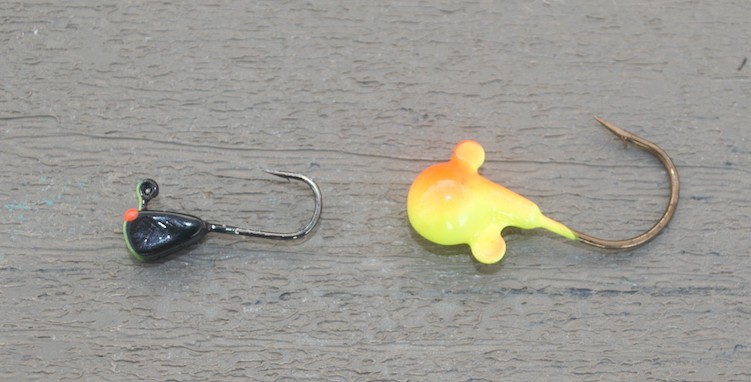News & Stories
Fishing the Midwest Set to Return to Airwaves!
Posted by director on December 7, 2020

PRESS RELEASE: For Immediate Release
PRESS ONLY: For information contact Mike Frisch—217-731-8141 or schooloffish@outlook.com
FISHING THE MIDWEST RETURNS TO THE AIRWAVES!
The very popular Fishing the Midwest television series will start airing again in early 2021 in homes throughout Minnesota, Wisconsin, Iowa, North Dakota, South Dakota, Nebraska, Illinois, Michigan, Indiana, Kansas, and Missouri on network stations and cable and satellite networks, and throughout North America on satellite systems. Fishing the Midwest is well into a third decade of providing fishing information and entertainment to anglers.
In a recent interview, Mike Frisch, host and executive producer of Fishing the Midwest, stated that, “Fishing the Midwest will reach more Midwest anglers than any other TV fishing show. We continue to have an extensive list of TV and cable providers and we’ll continue to air at times when viewership levels are high. And, as always, we’ll air the type of programming that Midwest anglers are asking for. Now more than ever, anglers want to know where to go fishing close to home. On Fishing the Midwest, we’ll show those anglers where to fish and detail fishing techniques they can easily master to take advantage of the outstanding fishing opportunities available here in the Midwest.”
Fishing the Midwest continues to be one of the highest-rated and most popular outdoor television shows available to anglers. Fishing the Midwest is recognized as a leader in incorporating production qualities of the highest level into an outdoor television series that includes information and entertainment.
New episodes of Fishing the Midwest will begin airing the first weekend of January 2021. For a complete listing of topics, stations and times for Fishing the Midwest, visit fishingthemidwest.com
Photo – TV host Mike Frisch (right) and Wisconsin’s Mike Gottheardt with a couple of smallmouth bass they caught while filming an episode of Fishing the Midwest TV recently. Fishing the Midwest returns to airwaves across the Midwest and beyond in January 2021!
On the Edge for Fishing Success!
Posted by director on December 2, 2020

On The Edge for Fishing Success!
By Mike Frisch
As I sat in my tree stand (located on the edge of a thick deer bedding area) tonight, I started thinking about the importance of cover edges to both fishing and hunting success. The edge my stand sits on is where heavy cover opens up to a tall timbered, more open area that borders good food sources. The deer bed in the thick “stuff” and use the taller trees as a travel corridor to agricultural fields. This spot has a history of producing good shot opportunities.
When I trade my bow for a shotgun and chase pheasants, another edge, this time where a harvested bean field butts up to heavy CRP grass, is another hotspot. Pheasants use the heavy grass for cover and roosting and the bean field for food. A walk down the edge just into the grass during the last hour of legal shooting often yields good results.
In both these cases the cover is important for protection and as sort of a sanctuary, while the food is important for obvious reasons. Often fishing success, regardless of winter or summer, is also found along edges.
One of the most obvious “fishing edges” is the inside or outside edge of a band of weeds that rims a lake’s perimeter. In many lakes, a relatively clean sand flat eventually gives way to weeds on softer bottom. Those weeds grow out to deeper water where they eventually taper due to lack of sunlight. This classic “deep weedline” is where walleye, panfish, and bass anglers often fish. Active fish of various species cruise these edges looking for schools of minnows, then darting into the thick weed cover when bigger predators appear. The fish also head to the weeds when they’re inactive.
The deep weedline is a favorite during summer, but also can be a hotspot for ice fishing too, particularily early in the winter. Sometimes green, living weeds remain at first ice and areas where that happens can be hotspots as oxygen, baitfish, and bigger fish will load up there. As winter progresses and snow cover increases, the weeds may die back and the area loses its appeal.
Weed edges provide cover and food for fish, but other edges will hold fish as well. For instance, one of my all-time best winter walleye spots is a small stretch of rocks along the drop-off edge of a sand flat. The outside, or deeper edge, of the rocky stretch often holds walleyes during the early ice season. Several of my favorite “transition areas” like this one were found when scouting for fish during open water. These areas are noted and filed away for winter because they can be outstanding ice fishing spots too!
Weed lines and bottom transitions are often fish magnets, but the edges of underwater structure like sharp dropping flats and sunken humps will hold fish as well. These depth change edges provide fish deeper water to languish in during periods of inactivity, often during mid-day, with quick access to shallower water that often holds bait, particularly during low light periods.
Drop-off edges like this can be great spots to intercept gamefish at last light as they move up to feed. Sometimes a “straight” drop-off edge is productive, though I like to target any irregularities like points or turns the drop-off forms as these areas are often the “spot on the spot.”
Regardless what type of edge I’m fishing, relying on my winter sonar unit is vital. A properly adjusted quality sonar like those made by Vexilar will obviously help me find depth change edges. However, sonar will also clearly show weeds (helping to identify weed lines) and can show bottom transitions too. Plus, of course, the ability to “see” fish relating to any edge is another big advantage that makes winter sonar so important!
Finding fishing success starts with finding fish-holding structure. In many lakes that involves searching along some form of edge. Whether it be weeds, bottom changes, or drop-offs spending time searching “on the edge” is a great way to find fish and ultimately put more on the ice during your trips this winter.
As always, remember to include a youngster in your outdoors adventures!
Mike Frisch hosts the popular Fishing the Midwest TV series. Visit www.fishingthemidwest.com or follow Fishing the Midwest on Facebook for more "fishy" stuff.
Changes In Ice Fishing
Posted by director on November 23, 2020

CHANGES IN ICE-FISHING
By Bob Jensen
There’s still no ice on the local pond where I often start my ice-fishing season, but the weatherman says ice isn’t too far away. I hope the weatherman is right. All my stuff is ready to go. As I was organizing my ice-fishing gear, I realized how far we’ve come in how we fish through the ice and the equipment we use to do so. Let’s take a look at that topic.
In the early 1980’s, ice-fishing pioneer Dave Genz created the first portable ice-fishing platform. He called it a Fish Trap. By today’s standards the original Fish Trap was simple, some might even call it crude, but it sure did change how we fished through a hole in the ice. The Fish Trap was a tub with a chair that an angler could pull from hole to hole. It had a pull-over cover to cut the wind, an angler could carry gear in the tub, sit in the chair and fish comfortably. Ice anglers immediately recognized the utility of the Fish Trap. Dave’s creation has evolved to a point that some anglers call it a “Bass-Boat” on ice. They’re warmer, lighter in weight, have storage areas for gear, and pull easily on the ice. They’ve even spawned a new generation of portable shelters often referred to as a hub. Hubs could be described as a lightweight tent that sets up quickly and can easily be home to four ice-anglers. Hubs are much roomier. Whether a hub or a Trap, these blue shelters can be seen on the ice in large numbers wherever ice-anglers ice-fish.
The drills that we use to put holes in the ice have changed too. Not so long ago we used ice-augers that required a gas/oil mixture. Today we’re using electric augers. They’re quiet, lightweight, and the K-Drill can put lots of holes in the ice with a single battery. Electric augers make moving from hole to hole a more lightweight job, and the quiet operation is appreciated also.
Ice-fishing baits, boy have they changed! We can fish small baits more effectively due to the introduction of tungsten as a material for making ice-baits, and there are times when small baits make a difference. I remember an ice-fishing trip sometime in the early part of the 21st century. It started in South Dakota. We were fishing perch with eighth ounce spoons. The spoons were probably no more than two inches long. We caught a lot of perch on those spoons. A couple of days later we were after perch in Wisconsin. Since the perch in South Dakota liked the spoon that I was using, I used the same spoon in Wisconsin. Wisconsin perch, on that day, were a lot more finicky than the South Dakota perch. My friends were catching lots of perch, I wasn’t. I looked at the jigs they were using. They were way, way smaller than my spoon. There are times when small baits catch more fish. A tungsten jig is much smaller in appearance than a lead jig of the same weight. A fish eats a bait based on its appearance, not its weight. Baits made of tungsten catch more fish when the fish are selective.
Last thing: Line for ice-fishing. We used to use the same line for ice-fishing that we used for open water fishing. While open water line works for ice-fishing, today there are lines developed specifically for ice-fishing and they work much better. There are also more options when it comes to line diameter. One pound line increments make it possible to really fine-tune our lure presentation. Anglers have found that three pound test line works better than two or four pound test in some situations.
So, as I wait for ice to arrive, I remember how we used to fish through the ice, and how we now fish through the ice. I like it better how we do it now.
PHOTO CAPTION---On the left is a 1/16th ounce tungsten jig, on the right a lead jig of the same weight. Notice the difference in physical size.
To see new and old episodes of Fishing the Midwest television, fishing articles and fishing videos, go to fishingthemidwest.com
